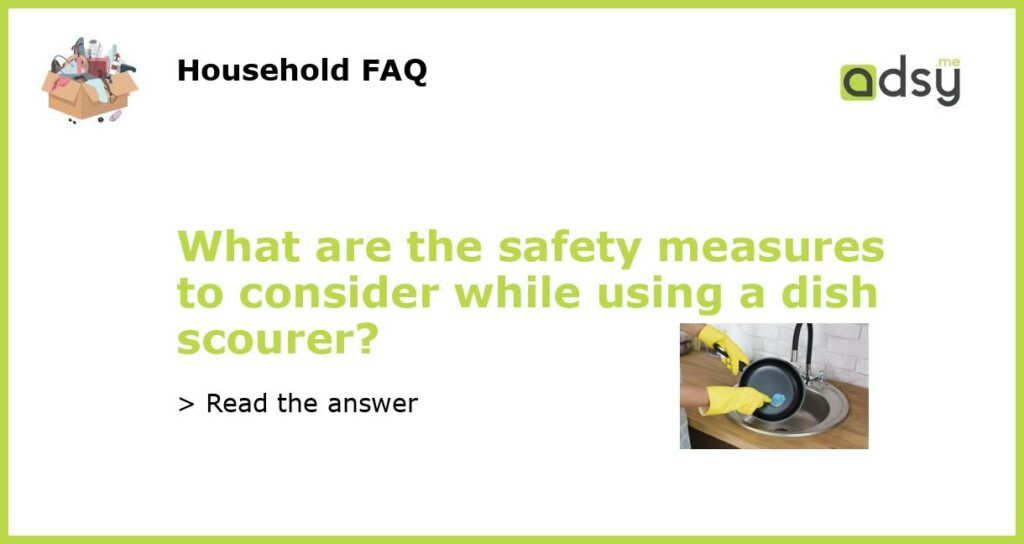Safety Measures to Consider When Using a Dish Scourer
Dish scourers are an essential tool in every kitchen but can be dangerous when handled carelessly. If not handled correctly, scourers can cause cuts, injuries, and even infections. Therefore, it is crucial to ensure safety while using them. Here are some safety measures you need to consider when using a dish scourer.
Use Protective Gloves
Scouring pads are abrasive and can injure your hands if not adequately handled. To avoid injuring your skin, wear protective gloves while using them. The gloves should be resistant to tears, punctures, and cuts. When choosing gloves, go for those made of latex, vinyl, or rubber.
Use Warm Water
Using warm water while cleaning with dish scourers help to loosen dirt, grime, and stains. However, ensure that the warm water is not too hot as it can damage your skin. Be careful with hot water when cleaning dishes, especially when there are kids around.
Avoid Using on Non-stick Surfaces
Avoid using scouring pads on non-stick surfaces such as Teflon, as this can damage the material. Instead, use soft sponges or cloth to clean non-stick dishes. If you must use scouring pads, use those designed explicitly for the non-stick surface.
Do Not Share Your Scouring Pad
Scouring pads are a breeding ground for bacteria, and sharing them can spread infections. For hygiene reasons, ensure that you use your scouring pad only and do not share it with others. Also, ensure that you clean your scouring pad after use and keep it in a clean and dry place.
Replace Old Scouring Pads
Scouring pads tend to wear out over time, and this can decrease their effectiveness. When the scouring pads wear out, they also become breeding grounds for bacteria, creating more risks of infections. Therefore, it is crucial to replace old scouring pads regularly. One can replace the scouring pads after a week or two of use, depending on the frequency of use.






